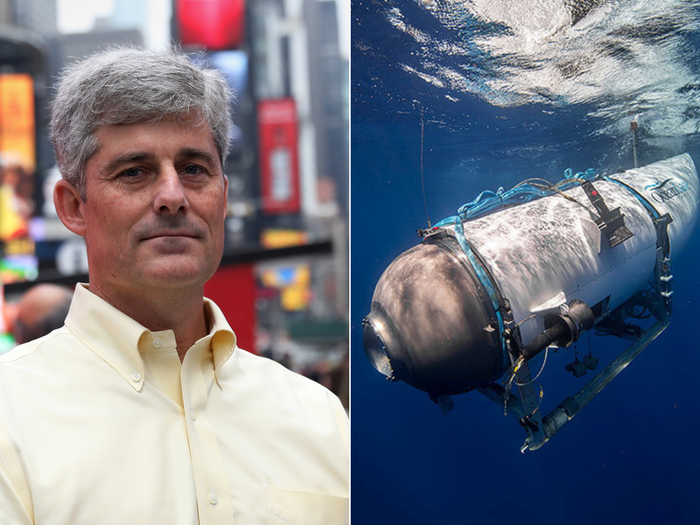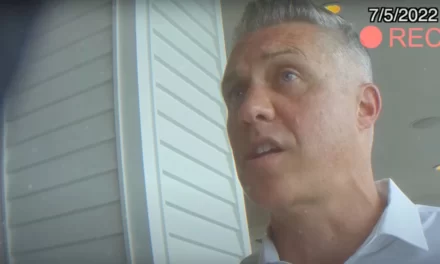
Titan Tragedy Has a Culprit — Stockton Rush

According to most experts appearing on national television, the tragedy that took five lives in the depths of the Atlantic Ocean was completely preventable. And the fact that it was not prevented has been directly and indirectly blamed on OceanGate founder and CEO Stockton Rush and his reckless disregard for obvious safety measures in the construction, testing and maintenance of the Titan.
The only thing that can be said in his favor is that he, himself, believed the submersible craft was safe since he was piloting the doomed vehicle. His failure to adhere to more stringent safety protocol was not a matter of malicious intentions or greed. He obviously thought the vehicle was safe.
Rush tended to be brash about the achievements of OceanGate and often bragged about pushing past norms and regulator policies. He maintained that Titan was an “experimental craft” that did not require following normal industry safety procedures or government certification. Rush believed those procedures only delayed development and technical progress.
Others saw his shortcuts as reckless and irresponsible. Some associated with the project had expressed their concerns about the safety of the Titan. Others refused to ride in the craft out of safety concerns.
The Marine Technology Society’s Submarine Committee – an international group of submersible developers and operators – wrote a letter to Rush indicating a number of concerns over both the technology and promotion of the vehicle.
The group’s chair, Will Kohnen, said that he “was not surprised by the tragedy” and that his organization has been aware of this project for some time and have had some concerns…
In his letter to Rush, Kohnen wrote:
“Our apprehension is that the current experimental approach adopted by OceanGate could result in negative outcomes (from minor to catastrophic) that would have serious consequences for everyone in the industry.”
As an experimental craft, the Titan was not cleared for commercial or tourist use. So, what were these folks doing on board? It appears that they were claimed to be a “crew” – not paid passengers. At $250,000 a seat, they were most assuredly paid passengers. In fact, crews GET paid. Only passengers pay.
Rush rationalized the inclusion of paid passengers as Titanic tourists as a means of getting the money for more legitimate scientific exploration of the deepest sea environments. That noble purpose did not justify the reckless approach.
Rush has been criticized for both the safeness of the technology and the promotion of it. Titan was the first deep-sea submersible to use a titanium carbon fiber hull. While the vehicle was tested before carrying humans, it was never tested for repeat dives. According to Kohnen, the tragedy would not have happened if Rush used established and proven construction techniques and material. “We know how to build them safely, and have done so hundreds of times” Kohnen noted. “You just have to follow the rules.”
Kohnen added, “We have submarines all over the world diving 12,000 to 20,000 feet every day of the year for research,” he said. “We know very well how to build and how to design these machines and how to operate them safely.”
The “rules,” however, would have required more time, more expense and resulted in crafts with a more limited passenger capacity.
There was also a Rube Goldberg quality in the construction of the Titan. For example, Rush used heavy sewer pipes as ballasts. Titan lacked a lot of commonsense safety devices. The hatch could not be opened from the inside. Even if Titan had risen to the surface, the occupants could have suffocated before help arrived. There was no locator technology onboard – such as “ping” emitters you find on aircraft. Rather than the product of a technical and scientific enterprise, the Titan too often seemed the product of a do-it-yourself operation.
Rush had also been criticized for using the names of NASA and Boeing in association with the development of Titan when, in fact, they played no role in the technical design or manufacturing of the vehicles. Kohnen’ s organizations had previously called on Rush to end those references to Boeing and NASA in his promotional material since it would give a false impression and false comfort to prospective passengers.
In many ways, this was a tragedy and an engineering failure just waiting to happen. Rush took risks – and most seem to believe, unreasonable risks.
Kohnen was correct in his letter that a tragedy of this sort would impact on the entire exploration community. There will be repercussions. There will be new regulations that close the loopholes Rush travelled through. Perhaps a law against selling seats on experimental crafts. This could impact on both Jeff Bezos and Richard Branson, who took paying passengers into outer space recently.
In addition to Rush, the list of those lost includes Paul-Henri Nargeolet, France’s most honored explorer, billionaire businessman Hamish Harding, another leading member of the Explorers’ Club, Pakistani billionaire adventure-seeker Shahzada Dawood and his 19-year-old son, Suleman. Ironically, the younger Dawood did not wish to participate but did so as a Fathers’ Day gift to his dad.
While Rush had won the admiration of the world for his many accomplishments as an explorer and adventurer — and even his sense of daring-do — his legacy will sadly reflect a man who was too reckless – a man who needlessly cost the lives of several people, including himself.
So, there ‘tis.


























I wonder if it is the foreknowledge of what happened and the back story that makes me biased to seeing that photo portrait of him as smugness exemplified.
Any decent engineer with even a remote knowledge of materials would know carbon fiber, indeed, ANY composite material, should not be used at such pressures. Period.
True, carbon fiber is incredibly strong, but it is just a fiber held together with plastic resin. Plastic shows creep deformation. And as a result you get delaminations within the construct.
I can also see several other constructs within the sub that would only exacerbate the nuances of carbon fiber.
It was only a matter of time…..and the praise heaped on Rush for being an explorer is ill-advised.
As a side note, my son showed me a YouTube of a train tanker car imploding at atmospheric pressure. Clearly 14.7PSI v. a near-vacuum and the steel gave up. NASA and aerospace deals with exactly that but in a different direction. The higher pressure is internal.
Rush was dealing with EXTERNAL pressures of 2,000psi when it appears he poofed and 6,000psi at depth.
The last analogy I’ll offer is the trick of standing on an empty soda can. It can support my 225lbs………unless someone just touches the side of the can. Just like the ocean pressures in the center of the sub (the ends were constrained by the titanium domes so where do you think the deflection occurred?)
Rush won’t be selling any more of his snake oil.
Rush should have FOLLOWED the rules and not have “Crew” (AKA paying tourists) on these “death tubes” until everything was tripled checked. The Company will be sued out of the wazoo and have to declare bankruptcy. I’m sure the lawsuits will be massive because this could and should have been prevented. The Russian Science group that James Cameron used was PROFESSIONALS and both Mir subs were rated to go down to Titanic’s levels safely. If he had subs like those, then he and the others would still be alive today. You DON’T cut corners and expect a rosy outcome…
While I’m not one for over regulating anything, especially by government agencies, when it comes to things that can be potentially dangerous, we must not be negligently over confident. All indications are that Rush was too arrogant for his own good.
Well, it was fun while it lasted.
Sometimes, safety regulations keep us safe…..
I harken back to the microwave industry which had FDA regulations but also industry-norms that together created an industry helping consumers and the corporation alike. Here we were, cooking with cancer-causing rays, we call it “nuking,” and barely a peep over safety issues beyond hot food. And the industry flourished benefitting the companies as well as making consumers lives better.
This guy instead not only destroys these lives but also probably the industry for deep sea extreme tourism, if not extreme tourism in general. Apparently it IS rocket science…… I guess the fact it was instantaneous, or thereabouts, I guess is a kindness.
Very sad.